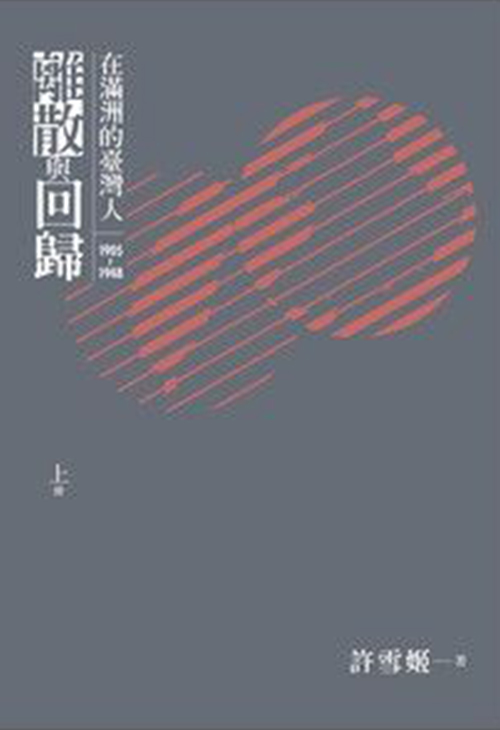Asia Book Awards
Best Asian Books of the Year

Diaspora and Return : Taiwanese in Manchuria(1905-1948)(離散與回歸:在滿洲的臺灣人(1905-1948))
Taiwan, Rive Gauche Publishing House(左岸文化), Hsu Hsueh-chi(許雪姬)
Author
The author holds a Ph.D. in history from National Taiwan University and is currently a research fellow at the Institute of Taiwan History at Academia Sinica. She specializes in the study of Taiwanese history, focusing on the history of Taiwanese institutions in the Qing Dynasty, family history, the history of Taiwanese overseas during the Japanese occupation, the February 28 Incident and White Terror, and oral history.
Publisher
左岸文化(Rive Gauche Publishing House)
The Publisher focuses on history (civilization, political history, war history, biographical history, material history, medical history, and scientific history), political current affairs, sociology and anthropology, and general science books.
“Rive Gauche, meaning “south of the Seine,” is not a geographical location, but a way of looking at the world. We want to study phenomena and the structures that underlie them, observe change and the contradictions and conflicts within it, and understand the human mind and the environmental factors that influence it. We want to explore until the world ends.”
This book is a masterpiece that took the author nearly 30 years to complete. The publication of this book is invaluable, as there are not many resources on Manchukuo in Taiwan, and even fewer on Taiwanese in Manchukuo.
In addition to conducting numerous interviews, the author collected a large amount of data from various newspapers, biographies of relevant figures such as 《臺灣人士鑑》, and employee records of the Huabei, Manchuria, and China regions(《滿華職員錄》, 《華北職員錄》, 《中國紳士錄》) which written by Japanese. And most importantly, the author used records of Taiwanese who held public office in Manchuria on 《滿洲國政府公報》. The author utilized the “Passport Application and Return Form of the Governorate of Taiwan”(《臺灣總督府旅券下付及返納表》) from the Diplomatic History Museum of the Japanese Ministry of Foreign Affairs. He also traveled to the Liaoning Provincial Archives in Shenyang, China, to find the records of the Manchurian Medical University, which proved even more valuable.
The book is organized into nine chapters. Chapter 1 describes the Taiwanese “experience in Manchuria”. Chapter 2 discusses Taiwanese perceptions of Manchuria, the establishment of Manchukuo, and why and how Taiwanese migrated to Manchuria. Chapter 3 studied Taiwanese who received middle and high school education in Manchuria, including graduates of medical, engineering, law, and commerce universities. Chapter 4 describes the establishment of the Manchukuo bureaucracy and the role of Taiwanese in it. Chapter 5 describes the lives of Taiwanese in Manchuria, including those who worked in state-owned, special, and semi-special companies (but not as government employees), as well as merchants, laborers, and recruits. Chapter 6 explores Taiwanese physicians in Manchuria and finds that most physicians opened their own clinics, except for a few who worked in health administration or did medical research. Many of the doctors who opened their own hospitals in Manchuria came from medical families and were inevitably related. Chapter 7 discusses the war stories of Taiwanese in Manchuria, which were the most memorable experiences for Taiwanese who migrated to Manchuria. Chapter 8 explores how Taiwanese who returned to Taiwan after the war or remained in Northeast China faced life under the KMT or CCP regimes. Since the 1970s, more than two in ten of those who had lived in Manchuria have left again and found new homes in places like Japan, the United States, and Australia.
